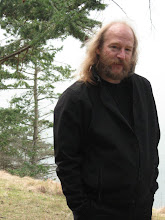Seeing True Nature: Reading
Reality
From
the perspective of the individual, Zen practice-enlightenment consists in ‘seeing
true nature’ (kensho) or ‘seeing
Buddha’ (kenbutsu) and conducting
oneself accordingly. When one clearly sees reality as it is – dharmas (i.e. phenomena;
particular things, beings, and events) here-now – one is enabled to think,
speak, and act appropriately. In short, to see dharmas as they are is to ‘clearly
discern’ or ‘accurately read’ reality.
From
the Zen/Buddhist perspective, each and all dharmas are ‘expressions of
reality,’ that is, ‘expressions of Buddha’ – thus to see dharmas as they are, is to accurately read (hence understand)
expressions of Buddha. To see dharmas a expressions of Buddha, is to see each
and all things as scriptures (sutras);
words of Buddha. Hence, to see the true nature of a mountain or ocean is to
accurately understand an expression of Buddha, to understand an expression of
Buddha is to see Buddha (kenbutsu).
Accordingly, to see Buddha (kenbutsu)
is to hear and understand dharmas as ‘this sutra.’
Sakyamuni Buddha addresses
Bodhisattva Universal Virtue: “If there is anyone who receives and retains,
reads and recites, rightly remembers, practices, and copies this Sutra
of the Flower of Dharma, we should know that that person is meeting Sakyamuni
Buddha, and hearing this sutra as if from the Buddha’s mouth.”
In general, all the buddhas
say that “to meet Sakyamuni Buddha” and to realize the state of Sakyamuni
Buddha is to realize the truth and to become buddha. Such behavior of buddhas
is originally attained through each of these seven practices. A person who
performs the seven practices is “that person” whom “we should know,” and is
“the very person here and now, as he or she is.” Because this is just the state
in which we meet Sakyamuni Buddha, it is directly “hearing this sutra as if
from the Buddha’s mouth.” Sakyamuni Buddha, since having met Sakyamuni Buddha,
is Sakyamuni Buddha. Thus, the form of his tongue universally enfolds the
three-thousandfold [world]: what mountain or ocean could be other than the
Buddha’s sutras? For this reason, “the very person here and now” who copies is
meeting alone with Sakyamuni Buddha. “The Buddha’s mouth” is constantly open
through the myriad ages: what moment could be other than the sutras? For this
reason, the practitioner who receives and retains the sutras is meeting solely
with Sakyamuni Buddha. The virtue of not only the eyes and ears but also the
nose and so on, may also be like this. The front and the back, the left and the
right, taking and leaving, an instant of the present, also, are like this. We
have been born to experience “this sutra” of the present: how could we not
rejoice to be meeting Sakyamuni Buddha? Life is an encounter with Sakyamuni
Buddha.
Shobogenzo, Kenbutsu, Gudo Nishijima & Mike Cross
Thus,
the nondual unity of essence and form is the keystone of Zen doctrine
and methodology; the profundity of its significance is intimated by Dogen’s
often repeated, ‘Nothing in the universe is concealed.’ As the keystone of Zen doctrine,
the nondual unity of essence
and form is the reason (dori) ‘there are understandable explanations.’ As the
keystone of Zen methodology, it is the activity of ‘practice-enlightenment,’
‘solely seated (meditation),’ or ‘thinking not-thinking’ (or ‘nonthinking’).
To
be continued…




No comments:
Post a Comment